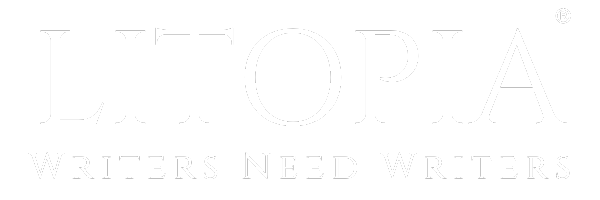D
Dorm Ant
Guest
Thought it could be a fun thread?
Follow along with the video below to see how to install our site as a web app on your home screen.
Note: This feature may not be available in some browsers.
Café Life is the Colony's main hangout, watering hole and meeting point.
This is a place where you'll meet and make writing friends, and indulge in stratospherically-elevated wit or barometrically low humour.
Some Colonists pop in religiously every day before or after work. Others we see here less regularly, but all are equally welcome. Two important grounds rules…
We now allow political discussion, but strongly suggest it takes place in the Steam Room, which is a private sub-forum within Café Life. It’s only accessible to Full Members.
You can dismiss this notice by clicking the "x" box
Sounds like something I would love, I will check him out.A Branch From the Lightning Tree, by Martin Shaw, the first of his Mythteller trilogy (non fiction). He is so good and nourishing, especially, somehow, in midwinter (I got his Courting The Wild Twin last Christmas; also highly recommended). He's writing about myth, the outer wildness of the world and our own innate wildness. It's the sort of book where you read a chunk and then have to go and digest it quietly before you can read on. Lovely image-rich poetic style, always kind of nudging at something deeper than the words themselves.
Would love to hear how you find it!Sounds like something I would love, I will check him out.
Great selection!None for meI wasn't allowed this year. But my daughter got The Mistborn Trilogy, The Lunar Chronicles, Daughter of Smoke and Bone trilogy (twice), Red Queen, From Blood and Ash, and an anime. How about you?
Sounds good!A Branch From the Lightning Tree, by Martin Shaw, the first of his Mythteller trilogy (non fiction). He is so good and nourishing, especially, somehow, in midwinter (I got his Courting The Wild Twin last Christmas; also highly recommended). He's writing about myth, the outer wildness of the world and our own innate wildness. It's the sort of book where you read a chunk and then have to go and digest it quietly before you can read on. Lovely image-rich poetic style, always kind of nudging at something deeper than the words themselves.
Oh, I love the book The Princess Bride!As well as the new Asterix (which I’m saving for now) I got two books shamelessly of classic films that I’m now reading at the same time: Do Androids Dream of Electric Sheep - which is so far far more cerebral and features a lot more sheep that Blade Runner; and The Princess Bride - which is just hilarious and has the most fantastic narrative device (though I kinda ruined the magic of it a bit by looking it up on Wikipedia).
The Princess Bride
I read Electric Sheep before I saw Blade Runner, and was baffled by the film. No sheep! Odd ending.As well as the new Asterix (which I’m saving for now) I got two books shamelessly of classic films that I’m now reading at the same time: Do Androids Dream of Electric Sheep - which is so far far more cerebral and features a lot more sheep that Blade Runner; and The Princess Bride - which is just hilarious and has the most fantastic narrative device (though I kinda ruined the magic of it a bit by looking it up on Wikipedia).
I like the sound of this; thanks for the recommendation.A Branch From the Lightning Tree, by Martin Shaw, the first of his Mythteller trilogy (non fiction). He is so good and nourishing, especially, somehow, in midwinter (I got his Courting The Wild Twin last Christmas; also highly recommended). He's writing about myth, the outer wildness of the world and our own innate wildness. It's the sort of book where you read a chunk and then have to go and digest it quietly before you can read on. Lovely image-rich poetic style, always kind of nudging at something deeper than the words themselves.
Am I right you're in Devon? He's a Devon boy himself although this book talks more about Snowdonia. But I think he lived in a tent on Dartmoor for a bit. He does stuff with the Westcountry School of MythI like the sound of this; thanks for the recommendation.
The Princess Bride!
"Father Christmas" got this for my son. Good stuff, the new duo are getting into their stride now.the new Asterix
